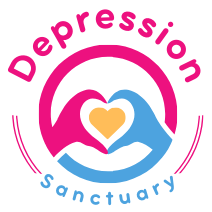Depression is incredibly common, and it can make even the simplest tasks feel overwhelming. If you’ve been struggling to feel like yourself, there’s a surprisingly straightforward strategy that may help: Behavioral Activation. This approach to treating depression is backed by science, easy to get started with, and focused on reconnecting you with what matters most in your life.
This article offers a simple introduction to what behavioral activation is, why it works, and how to begin using it. Whether you’re new to therapy or just looking for something practical you can try, this method could be a powerful step forward.
What is Behavioral Activation?
Behavioral Activation (or BA for short) is a therapy approach that helps people feel better by getting them more engaged in activities that are meaningful and enjoyable. When you’re depressed, it’s common to withdraw from things you once cared about—friends, hobbies, even small daily routines. That withdrawal can make depression worse, trapping you in a cycle of low mood and inactivity.
BA works by gently breaking that cycle. It focuses on helping you reintroduce rewarding activities into your life—especially the ones that line up with your values and goals (Kanter et al., 2010). Instead of trying to change your thoughts or feelings first, BA starts with small changes in behavior. These actions then lead to a natural boost in mood and motivation (Lejuez, Hopko, & Hopko, 2001). The best part? It’s simple, cost-effective, and works in many settings—including self-help formats (Uphoff et al., 2019).
The Benefits of Behavioral Activation
Research shows that Behavioral Activation is a powerful treatment for depression across many age groups and backgrounds (Cuijpers, van Straten, & Warmerdam, 2007; Takagaki & Yokoyama, 2024). It’s been shown to work as well as medication or traditional cognitive therapy (Dimidjian et al., 2006; Ekers, Richards, & Gilbody, 2008). But what makes it especially appealing is how approachable it is.
It’s easy to learn, making it ideal for people who don’t have access to regular depression therapy (Lejuez et al., 2001). And because it’s all about choosing activities that reflect your personal values—whether that’s spending time with loved ones, being creative, or improving your health—it doesn’t just lift your mood. It can help you rediscover purpose and satisfaction in your daily life (Kanter et al., 2010).
BA also tackles one of the biggest roadblocks in depression: avoidance. When you stop doing things because of anxiety and depression symptoms like fear, fatigue, or low mood, it only deepens the problem. BA helps you gently reverse that pattern, so you can start feeling more like yourself again (Takagaki & Yokoyama, 2024). It’s flexible, too—it can be used one-on-one, in group settings, or even through telehealth and peer-led programs (Kennedy et al., 2023).
How Does Behavioral Activation Work?
At its core, BA is about doing more of what lifts you up—and less of what holds you back. It usually starts with a few basic steps (Kanter et al., 2010).
First, you track your current activities and moods to see what’s helping and what’s not. Then, you clarify what really matters to you—your values. This could be anything from being a good parent to learning new skills or spending time in nature. From there, you begin scheduling small activities that reflect those values.
Next, you work on noticing and reducing avoidance behaviors—like skipping social plans or putting off tasks you care about. Finally, you build in small rewards or celebrations to reinforce your efforts and keep you moving forward (Lejuez et al., 2001). Over time, these small changes can lead to a powerful ripple effect—improving not just mood, but energy, confidence, and overall quality of life.
Getting Started with Behavioral Activation
You don’t need a therapist to begin using Behavioral Activation (though having one can help). To start, try keeping a simple journal for a week. Write down your daily activities and how each one makes you feel. This can reveal patterns—what boosts your mood, and what drags it down.
Next, take a moment to reflect on your values. What areas of life matter most to you right now—family, health, creativity, connection? Based on this, make a short list of activities you enjoy or find meaningful. Don’t overthink it—small things count.
Pick one or two of those activities and schedule them into your week. Use your phone, a planner, or sticky notes—whatever helps you remember and follow through. If you notice yourself avoiding certain situations or habits, try gently facing them with support. And most importantly, celebrate your wins—even the tiny ones. Small actions matter.
If you’d like extra support, consider working with a therapist trained in BA, joining a peer support group, or exploring self-help programs. Telehealth options are also widely available (Kennedy et al., 2023).
Conclusion
Behavioral Activation is more than a therapy—it’s a way to get back in touch with the things that bring meaning and joy to your life. It doesn’t require years of analysis or expensive treatment. Instead, it offers a practical, empowering path forward—one step, one activity, one small win at a time. Whether you’re just beginning your mental health journey or looking for a fresh approach, BA might be just the spark you need to start feeling better.
Image credit: Tobi
References
Cuijpers, P., van Straten, A., & Warmerdam, L. (2007). Behavioral activation treatments of depression: A meta-analysis. Clinical Psychology Review, 27(3), 318–326. https://doi.org/10.1016/j.cpr.2006.11.001
Dimidjian, S., Hollon, S. D., Dobson, K. S., Schmaling, K. B., Kohlenberg, R. J., Addis, M. E., et al. (2006). Randomized trial of behavioral activation, cognitive therapy, and antidepressant medication in the acute treatment of adults with major depression. Journal of Consulting and Clinical Psychology, 74(4), 658–670. https://doi.org/10.1037/0022-006X.74.4.658
Ekers, D., Richards, D., & Gilbody, S. (2008). A meta-analysis of randomized trials of behavioural treatments of depression. Psychological Medicine, 38(5), 611–623. https://doi.org/10.1017/S0033291707001614
Kanter, J. W., Manos, R. C., Bowe, W. M., Baruch, D. E., Busch, A. M., & Rusch, L. C. (2010). What is behavioral activation? A review of the empirical literature. Clinical Psychology Review, 30(6), 608–620. https://doi.org/10.1016/j.cpr.2010.04.001
Kennedy, A. J., Gunn, K. M., Duke, S., Jones, M., Brown, E., Barnes, K., et al. (2023). Co-designing a peer-led model of delivering behavioural activation for people living with depression or low mood in Australian farming communities. Australian Journal of Rural Health, 31(3), 556–568. https://doi.org/10.1111/ajr.12982
Lejuez, C. W., Hopko, D. R., & Hopko, S. D. (2001). A brief behavioral activation treatment for depression: Treatment manual. Behavior Modification, 25(2), 255–286. https://www.personal.kent.edu/~dfresco/CBT_Readings/BM_Lejuez_BATD_Manual.pdf
Takagaki, K., & Yokoyama, S. (2024). Association between the Behavioral Activation Mechanism and Depression Severity: Focusing on Avoidance Patterns of University Students. Behavioral Sciences, 14(713). https://doi.org/10.3390/bs14080713
Uphoff, E., Ekers, D., Dawson, S., Richards, D., & Churchill, R. (2019). Behavioural activation therapies for depression in adults. Cochrane Database of Systematic Reviews, Issue 4, CD013305. https://doi.org/10.1002/14651858.CD013305

Nancy Schimelpfening is the founder of Depression Sanctuary. Unless otherwise stated, all of the content on Depression Sanctuary is written by and maintained by Nancy. Nancy has a master’s degree in community health education from Old Dominion University in Norfolk, VA. She was the About.com (now Verywell.com) expert on depression from 1998-2016. She has also written for other online publications, including Healthline, Healthgrades Professional, Health Digest, and MindBodyGreen.

